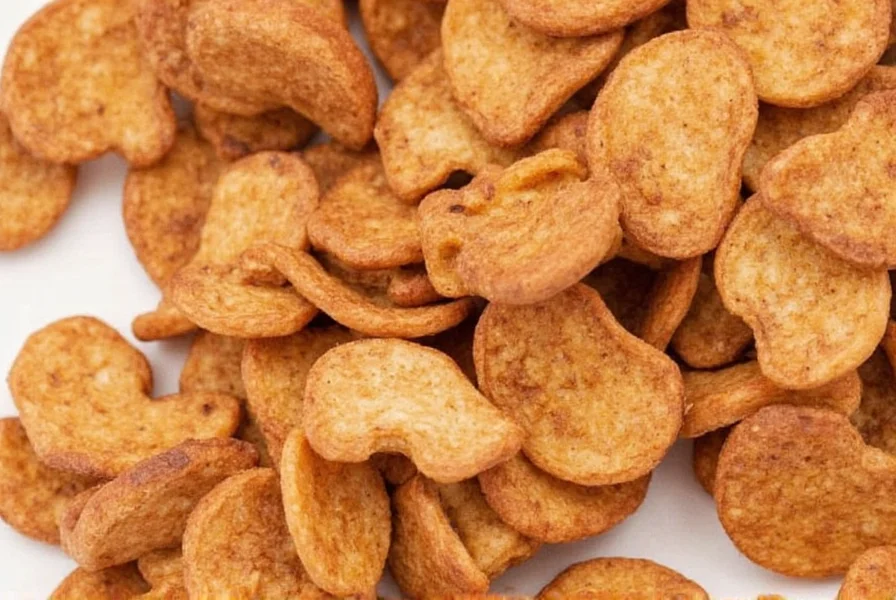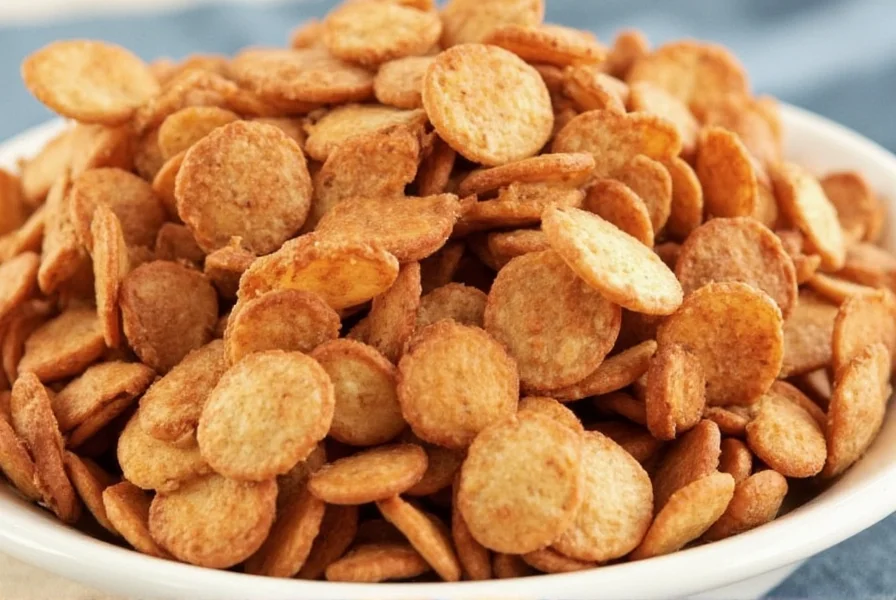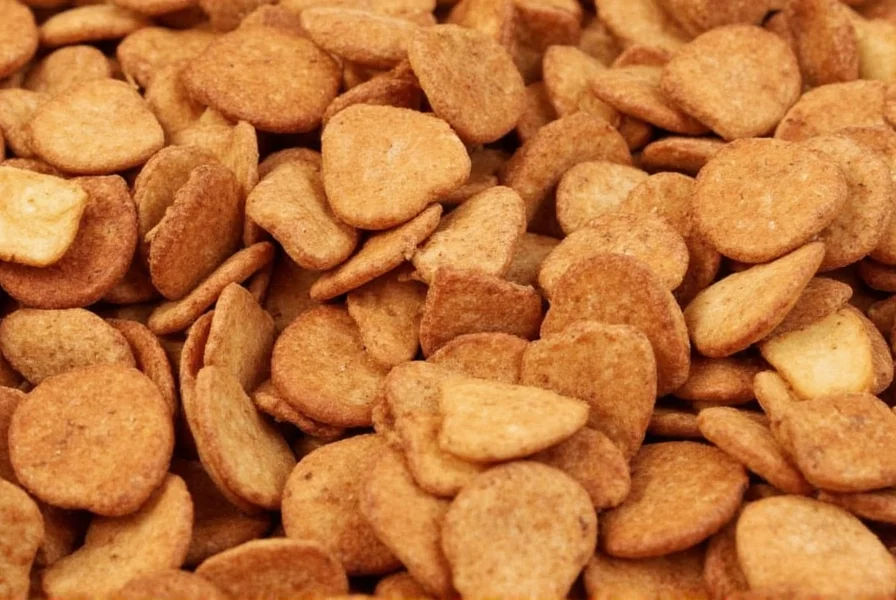When incorporated into baked goods, cinnamon chips melt slightly during baking while retaining their structural integrity, creating delightful flavor bursts throughout your creation. These specialized baking ingredients contain cinnamon oil, sugar, and binding agents that allow them to hold their shape at typical baking temperatures (325-375°F / 163-190°C), making them superior to regular cinnamon sticks which don't properly integrate into most batters and doughs.
What Exactly Are Cinnamon Chips?
Cinnamon chips represent a specialized baking ingredient engineered specifically for consistent flavor distribution in baked goods. Unlike cinnamon sticks (which require grinding) or ground cinnamon (which can create uneven distribution and dusty appearance), cinnamon chips maintain their form during mixing while gradually releasing flavor during baking.
Manufactured through a process that combines cinnamon oil with sugar and natural binding agents, these small, chip-sized pieces typically measure between 1/8 to 1/4 inch in diameter. The binding agents—usually non-GMO tapioca starch or similar natural thickeners—allow the chips to withstand standard baking temperatures while gradually melting to distribute flavor evenly throughout your batter or dough.

Advantages Over Traditional Cinnamon Forms
Understanding the differences between cinnamon chips and other cinnamon forms helps bakers make informed decisions for their specific recipes:
| Characteristic | Cinnamon Chips | Ground Cinnamon | Cinnamon Sticks |
|---|---|---|---|
| Flavor Distribution | Consistent pockets of flavor | Can clump or distribute unevenly | Surface-level flavor only |
| Baking Integration | Melts slightly while maintaining shape | Can create dusty appearance | Too hard for most baking applications |
| Texture Contribution | Subtle textural element | No textural change | Creates hard, inedible pieces |
| Best For | Cookies, muffins, quick breads | Rubbed into meats, spice blends | Beverages, poaching liquids |
Optimal Baking Applications for Cinnamon Chips
Certain baked goods particularly benefit from the unique properties of cinnamon chips for cookie recipes and other applications where visual appeal and flavor distribution matter.
Cookies and Bars
Cinnamon chip cookies deliver superior results compared to traditional cinnamon sugar cookies. The chips create distinctive flavor pockets that remain visible after baking, providing both visual interest and textural variation. For best results in cookie applications:
- Mix chips into dough at the final mixing stage to prevent breaking
- Use 1/2 to 3/4 cup chips per standard cookie recipe (24 cookies)
- Chill dough for 30 minutes before baking to prevent excessive spreading
- Pair with complementary ingredients like toasted walnuts or dried apples
Muffins and Quick Breads
When baking cinnamon chip muffins that stay moist, the chips prevent the cinnamon flavor from concentrating at the bottom of the muffin. To maximize effectiveness:
- Toss chips in 1-2 tablespoons of flour before folding into batter
- Use slightly less liquid than standard recipes (chips contain moisture)
- Consider a cinnamon chip swirl technique for visual appeal
- Pair with complementary fruits like diced apples or pears
Cinnamon Rolls and Pastries
For homemade cinnamon rolls with cinnamon chips, incorporate chips into both the filling and the dough for layered flavor. The chips maintain their integrity during proofing and create beautiful caramelized spots during baking that regular cinnamon cannot achieve.

Effective Usage Techniques
To maximize the benefits of how to use cinnamon chips in baking, follow these professional techniques:
Measurement Guidelines
Unlike ground cinnamon where measurements are critical for flavor balance, cinnamon chips offer more flexibility. Standard conversion ratios:
- 1 teaspoon ground cinnamon = 1.5 tablespoons cinnamon chips
- 1 cinnamon stick = 2 tablespoons cinnamon chips
- Always start with less and adjust to taste in your specific recipe
Preventing Common Issues
Two frequent problems with cinnamon chips are sinking in batters and premature melting. Prevent these issues by:
- Coating chips in flour or cake meal before adding to batter
- Using room temperature ingredients for proper emulsification
- Avoiding overmixing once chips are incorporated
- Reducing oven temperature by 25°F if chips melt too quickly
Substitutions and Alternatives
When you need cinnamon chips substitute for baking due to availability issues, consider these alternatives with appropriate adjustments:
Ground Cinnamon Conversion
For recipes specifically designed for chips, reduce liquid content by 1-2 tablespoons when substituting ground cinnamon. Mix the ground cinnamon with a small amount of melted butter before incorporating to help distribute the flavor more evenly.
Diy Cinnamon Chip Alternative
Create a homemade version by combining:
- 1/4 cup cinnamon oil or strong cinnamon extract
- 1/2 cup granulated sugar
- 2 tablespoons tapioca starch or cornstarch
- Mix until forming a thick paste, then chill and form into small chips
Storage and Shelf Life
Proper storage maintains the integrity of cinnamon baking chips shelf life. Store in an airtight container away from heat and moisture. Under optimal conditions:
- Pantry storage: 12-18 months (check for hardened texture)
- Refrigerated: Up to 24 months (prevents oil separation)
- Freezer: Indefinitely (thaw at room temperature before use)
Signs of deterioration include hardened texture, separation of oils, or diminished aroma. Discard if any mold appears or if they develop an off smell.
Frequently Asked Questions
Can I use regular chocolate chips instead of cinnamon chips?
No, chocolate chips contain cocoa and sugar levels designed for chocolate flavor, not cinnamon. The flavor profile and melting characteristics differ significantly. For cinnamon flavor, you need specifically formulated cinnamon chips or a proper substitute.
Why do my cinnamon chips sink to the bottom of my muffins?
Cinnamon chips sink when not properly coated before mixing. Toss them in 1-2 tablespoons of flour or cake meal to create a protective coating that helps them stay suspended in the batter during baking.
Are cinnamon chips gluten-free?
Most commercial cinnamon chips are naturally gluten-free as they contain cinnamon, sugar, and binding agents like tapioca starch. However, always check the specific product label for potential cross-contamination warnings if you have gluten sensitivity.
How do cinnamon chips affect baking time?
Cinnamon chips typically don't affect overall baking time, but they may cause slight surface browning earlier than expected due to their sugar content. Monitor baked goods closely during the final 5-7 minutes of baking and use a toothpick test for doneness rather than relying solely on time.
Can I make my own cinnamon chips at home?
Yes, you can create a DIY version by mixing cinnamon oil with sugar and a binding agent like tapioca starch until forming a thick paste. Chill the mixture, then form into small chips. While not identical to commercial products, this alternative works well for most baking applications when cinnamon chips aren't available.











 浙公网安备
33010002000092号
浙公网安备
33010002000092号 浙B2-20120091-4
浙B2-20120091-4